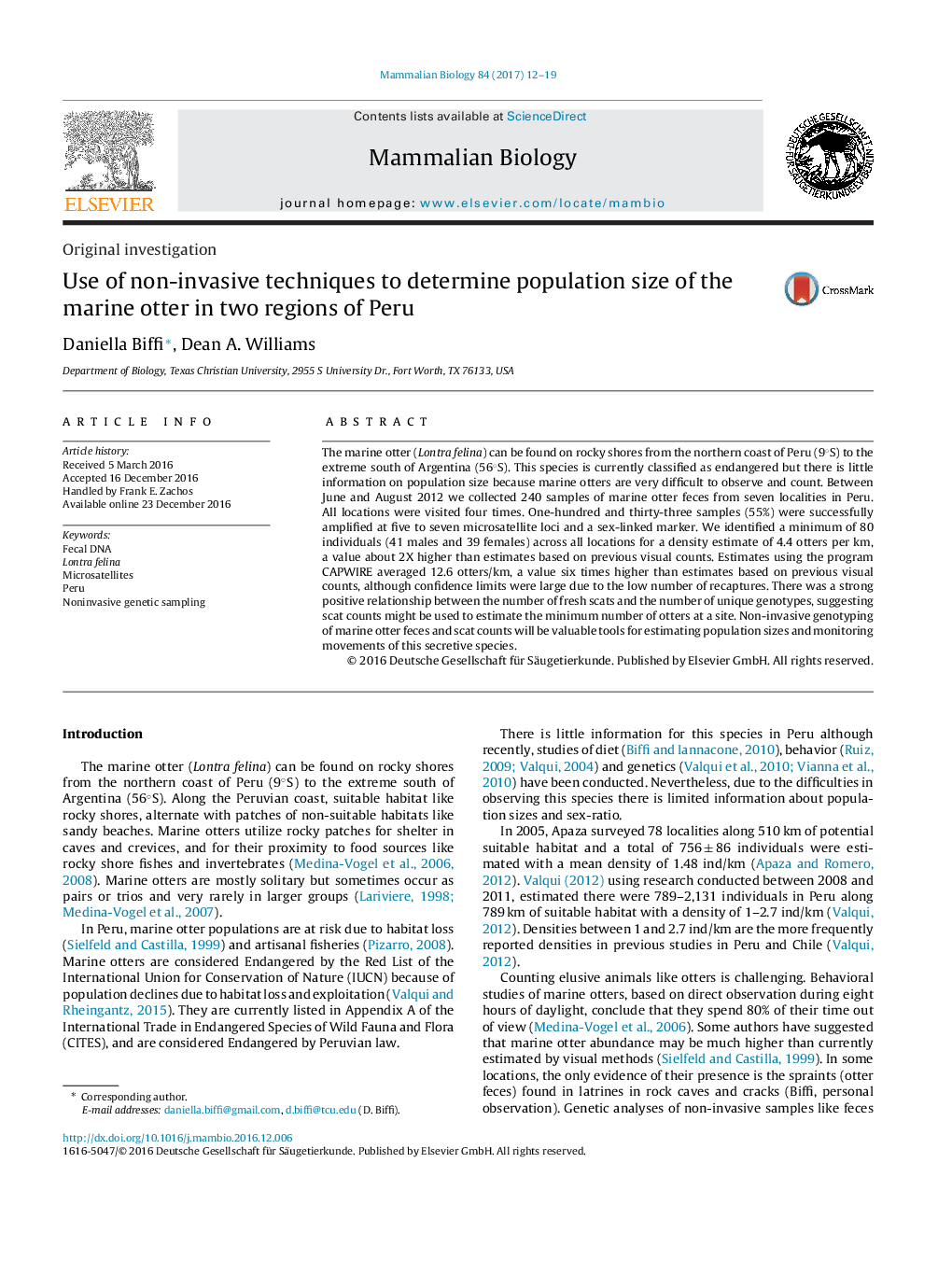| کد مقاله | کد نشریه | سال انتشار | مقاله انگلیسی | نسخه تمام متن |
|---|---|---|---|---|
| 5533788 | 1550463 | 2017 | 8 صفحه PDF | دانلود رایگان |
The marine otter (Lontra felina) can be found on rocky shores from the northern coast of Peru (9°S) to the extreme south of Argentina (56°S). This species is currently classified as endangered but there is little information on population size because marine otters are very difficult to observe and count. Between June and August 2012 we collected 240 samples of marine otter feces from seven localities in Peru. All locations were visited four times. One-hundred and thirty-three samples (55%) were successfully amplified at five to seven microsatellite loci and a sex-linked marker. We identified a minimum of 80 individuals (41 males and 39 females) across all locations for a density estimate of 4.4 otters per km, a value about 2X higher than estimates based on previous visual counts. Estimates using the program CAPWIRE averaged 12.6 otters/km, a value six times higher than estimates based on previous visual counts, although confidence limits were large due to the low number of recaptures. There was a strong positive relationship between the number of fresh scats and the number of unique genotypes, suggesting scat counts might be used to estimate the minimum number of otters at a site. Non-invasive genotyping of marine otter feces and scat counts will be valuable tools for estimating population sizes and monitoring movements of this secretive species.
Journal: Mammalian Biology - Zeitschrift für Säugetierkunde - Volume 84, May 2017, Pages 12-19
